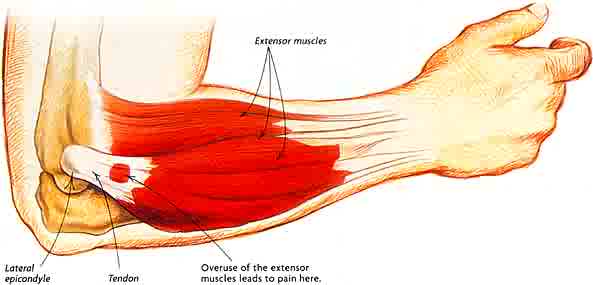Author Archive

AJGpr client, Dr. Rita Eichenstein s a licensed psychologist with post-doctoral training in pediatric neuropsychology and special education. She specializes in pediatric neuropsychological assessments and parent training skills. Her article Managing Your Emotions After Your Child’s Special Needs Diagnosis was recent;y published in NY Metro Parents. Here it is below.
——————————————————————————————
MANAGING YOUR EMOTIONS AFTER YOUR CHILD’S SPECIAL NEEDS DIAGNOSIS
From anger and denial to acceptance and joy, parents of children with special needs are sure to experience a mixed bag of emotions. Rita Eichenstein, Ph.D. explains what’s normal and how parents can manage feelings in a healthy way and accept diagnosis.
mother-and-daughter-with-heads-together
All expectant parents share certain feelings—excitement, nervousness, and happy anticipation. When their son or daughter is born, a new feeling emerges: anxious calibration. How does my child compare to all the rest?
When a child is diagnosed with a disorder such as a learning disability, autism spectrum, speech delay, sensory delay, or is just clearly “different” or quirky, the parents’ world can be profoundly shaken. Every parent is on an emotional journey, but for parents of atypical kids there is no roadmap to warn of the pitfalls or point out the best scenery. It is unknown territory.
Until recently, the well-being of these parents has rarely been noticed, let alone addressed. All the attention is focused on the child. That’s understandable, but it is also a big mistake. Doctors, teachers, and therapists depend on parents to be the primary managers of their children’s treatment. If the parent is exhausted from the relentless day-in, day-out challenges, it has an impact on his or her ability to manage that treatment. If Mom is hopeless and depressed, it affects her child. If Dad is angry, distant, or frustrated, the rest of the family is affected. Although these feelings are normal, they have the potential to be destructive. Luckily, there is a way to manage them. It begins by recognizing the feelings—good, bad, and ugly—and learning about them.
What the Journey May Look Like
In my work with parents of atypical children, I have seen that parents go through certain predictable emotions as they become accustomed to their child’s condition. The emotional phases are fluid, with parents often moving in and out of the various feelings several times over the course of a month, a week, or sometimes even a day. These are not just psychological reactions; they are hard-wired into your neurophysiology in the same way that primary responses such as fight-or-flight are hard-wired. The emotions you can expect as a parent of an atypical child may include:
Denial or Emotional Numbing: Although you may have sensed in your gut that something is not quite right, a common response to hearing that your child has a diagnosis is to freeze emotionally while your mind processes the news. That paralysis often takes the form of emotional numbing, and you may go into “autopilot” mode or even deny that there is a problem: “There’s nothing wrong with our son! Boys will be boys!”
Anger or Aggression: As the numbing effects of denial begin to wear off, you are confronted with the reality of the situation. That can be painful, and the pain is often redirected and expressed as anger. Friends, family, teachers, and doctors all can become the target of a parent’s anger, as can the child. It’s especially crucial that you recognize when you are in an anger phase and find an appropriate outlet, as families with atypical children have a higher-than-average rate of divorce and domestic violence.
Bargaining with Fate or Seeking Solutions: A common response to feeling helpless about a child’s condition is an urgent need to gain control over the problem. This is a positive impulse. However, our brains are geared toward simplifying information so that it aligns with what we already believe or understand. Parents may decide, “The Internet says this condition is over-diagnosed! I’ll just put our son on a diet…change schools…convert to Buddhism…pray daily.” Some alternative approaches do work, but the challenge is to weigh reason-based solutions against the lure of magical thinking.
Depression, Isolation, or Shame: Unfortunately, these emotions are somewhat unavoidable when parenting an atypical child. But self-awareness can help you manage your darker moods. For your child’s sake as well as your own, you need to learn self-care strategies for overcoming your occasional bouts of sadness.
Acceptance: Coping with the reality that your child has special needs is a deeply personal experience. Although nobody can fully understand all the emotions you’re going through, getting the support you need will help you reach an inner equanimity and an acceptance of the unique and very real child whose parent you are.
The dignity and grace shown by a number of parents with whom I have worked is truly inspiring. One mother told me, “I can’t believe I’m saying this, because I never would have wished this condition on my daughter, but having a child with autism has enriched our lives. Our family has grown closer, our capacity for empathy has expanded, and our other children have an extra measure of compassion and social awareness.”
No one expects you to be a saint simply because you are the parent of a child with challenges. But my experience with families like yours has shown me time and again that the journey you are on will be full of unexpected feelings and events—sometimes difficult, and sometimes surprisingly joyous.
Dr. Eichenstein is completing a book entitled Positively Atypical for Penguin,

It’s back-to-school — and for some of our children MATH presents all kinds of anxiety. AJGpr client, educational consultant, Angelina Arrington, founder of Academic Savvy – offers this advice in Today’s Parent — It All Adds Up: Five simple ways parents can make a big difference with math learning. Enjoy her “savvy” advice.
———————————————————————————————————
In all my years of teaching, the subject that has seemed to cause the most anxiety amongst parents is math. Hands down, I’ve received most of my panicked phone calls and frustrated emails because a parent felt ill equipped to assist with homework or could not explain math the way the teacher did earlier that day. My philosophy has always been to help families keep things simple. Life is complicated enough with school, activities, family time, and trying to stay sane in the midst of it all.
All children can be successful mathematical thinkers, and mathematics is meaningful when it is varied, rich, and rooted in real problems and applications. With a few, uncomplicated additions to your routine, you can make a significant impact on how comfortable your child is with math. The key is to try one thing, just one, until it becomes second nature, and then build from there. Here are a few easy activities to add to your routine to boost math confidence:
1) Brush up on your math skills and have a Positive Attitude about Math
Some of us don’t remember long division, and converting fractions to decimals is out of the question. Remember the phrase “please excuse my dear aunt sally”? If Order of Operations didn’t come to mind, you might need to brush up on your math skills. Check out YouTube for useful, short clips on problem solving. Sit with your child’s teacher for a review session if necessary. Visit school or volunteer; most teachers are happy to have you help with a lesson. Some schools even sponsor Family Math Night or other activities where families can learn math skills together. Most importantly, never say that you aren’t good at math no matter how unequipped you may feel! You are your children’s model for what is possible, and they might take your words to heart. If you struggle with math and money, let them see you work at overcoming your math challenges. In this case, it is absolutely true that they will do as you DO, not as you say.
2) Practice makes perfect
Familiarity and repetition are keys to success in math. Creating an evening routine to practice math concepts can help things go smoothly at school. A typical routine should include reviewing basic math facts such addition, subtraction, multiplication, division, and fraction-decimal-percent equivalents in addition to the completion of homework. This need not take more than ten minutes and can be accomplished through card games or child-friendly online tools or apps. Treat math facts in the same manner as a spelling word list: tackling a bit each day can lead to big payoffs.
3) Play math games and solve puzzles
Games that involve mathematical thinking can also help reinforce what your child learns at school. Consider games such as chess, checkers, and backgammon to work on analytical thinking skills. Games such as Uno help reinforce numeracy skills for younger children, while Monopoly helps school-age children of all ages learn how to count money and count by fives and tens. Puzzles can help with the development of spatial skills and problem solving, and according to research being conducted by the National Science Foundation, could lead to more interest and success in STEM-related fields.
4) Cook Together
Cooking helps reinforce fractions and equivalents. Choose a simple recipe to try with your child when you are free to take your time and make a mess! Be sure to read the equivalent measurement section to help better understand the need for and use of the different size measuring cups. Good Housekeeping and The Joy of Cooking have very good explanations of equivalencies. To make the activity more challenging, try making a dish using only a 1/4 cup, a 1/3 cup, and a teaspoon!
5) Create a math-rich daily life
Whenever you find yourself using math in your daily lives, bring attention to it and discuss math’s usefulness in real-life situations. Encourage your child to experiment with and use everyday math tools such as rulers, tape measures, measuring cups and spoons, clocks and calculators. Analog clocks are helpful in understanding halves and quarters, and its a neat way to learn how to count by five. Place one in the kitchen or other high-traffic area in your home.
Your math routine need not be complicated: simple routines make a measurable difference. Ask your child’s teacher for other suggestions, and use the many resources available to you on the Internet. Most importantly, model using math everyday!
Angelina Arrington is an educational consultant and founder of Academic Savvy (www.academicsavvy.com)

AJGpr client, Dr. Norman Marcus, author of End Back Pain Forever: A Groundbreaking Approach to Eliminate Your Suffering and founder of The Norman Marcus Pain Institute, recently posted a blog about the growing problem of prescription drug addiction and misuse and what government is doing about it. Here it is.
49 States Adopt Prescription Drug Database to Prevent Prescription Drug Abuse by Dr. Norman Marcus
Because of the growing problem of addiction, misuse, and diversion, 49 states have now adopted a state prescription drug database. You may have read an article recently in The New York Times about Missouri being the only state that has not adopted such a database. In New York, as a prescriber of controlled substances, each time a patient is prescribed any type of controlled substance, I must log into the NYS website to confirm that a patient is not receiving other medications from other doctors.
I found a few patients who had not been honest with me and had received medications from other doctors. Unfortunately, the small occurrence of dishonest behavior has obliged all doctors to be alert for the possible misuse of medication. At the Norman Marcus Pain Institute, I implement several rules for patients receiving any type of controlled substance from me. Here are a few of them:
• Only one physician can prescribe all pain medications.
• Only one pharmacy should be used to obtain all pain related medications.
• All medications, including herbal remedies and over the counter medications, need to be reported since all medications can interact with one another.
• Medications must be kept in a safe and secure place, such as a locked cabinet or safe.
Following these simple rules will help protect my patients and their families from improper use of pain medication.

AJGpr client, Dr. Norman Marcus, author of End Back Pain Forever: A Groundbreaking Approach to Eliminate Your Suffering and founder of The Norman Marcus Pain Institute, recently posted a blog entitled http://www.normanmarcuspaininstitute.com/49-states-adopt-prescription-drug-database-to-prevent-prescription-drug-abuse/ Tennis Elbow Causing Your Pain? PRP is NOT the Solution Study Shows.
In this blog he talks about what treatments work to end tennis elbow pain and what don’t. Below is his post.
——————————————————————————————————————————————
Tennis Elbow Causing You Pain? PRP is NOT the Solution Study Shows
At NMPI, we frequently see patients in our office with pain in their elbow. Most often it’s tennis players who complain of persistent pain in the forearm as the result of overuse from racquet sports but other sports and non-athletic activities can also put you at risk for this condition known as Tennis Elbow (TE), or lateral epicondylitis. Strain related changes in the tendons that join the forearm muscles to the outside of the elbow can be very painful.
I was not surprised to read in the British Journal of Sports Medicine, that a recent study (Strong Evidence Against Platelet-rich Plasma Injections for Chronic Lateral Epicondylar Tendinopathy: A Systematic Review) reported that PRP, which I recently reported as not being effective for hamstring injuries, is now found to be ineffective for persistent Tennis Elbow as well. PRP has been increasingly used for many painful conditions that athletes experience. This is based on the finding that in laboratory animals healing can be induced in damaged tissue if platelets are injected into the injured area. The popularity of PRP for TE has growndespite no strong evidence that it actually works. Sir William Osler, a renowned physician once said “use every new treatment as quickly as possible before it stops working.” At NMPI, we do not rush to use a “new” approach just because it is new. We are committed to eliminating our patients’ pain and preventing its recurrence.
TE is commonly diagnosed by producing pain when pressing on the tendons that attach to the lateral epicondyle along with pain when the wrist is pulled upward (dorsiflexion) against resistance. TE is generally self-limiting but in some patients it may take more than a year to get better with no treatment. When the pain and tenderness persist various treatments have been tried.
Here’s what works:
- In a 2010 paper, an exercise treatment was found to be very effective in relieving TE pain and tenderness.
- At NMPI, we treat these tender muscles successfully with a laser or with muscle injections.
Here’s what doesn’t work:
- Steroids are not recommended since there is no inflammation in TE and steroids can actually damage the tendon.
- PRP for tennis elbow has been found to not be effective
Newer treatments are often not better. It is always best to first treat any lasting pain problem with the least invasive, safest, and least expensive interventions. This is called the step-care model and the approach you will receive at the Norman Marcus Pain Institute.

AJGpr client, educational consultant Angelina Arrington, Founder of Academic Savvy, has just posted her second blog installation in her Summer Savvy Series to kids learning and having fun during the summer break when statistics shows that math and reading levels drop during these months. Here is Part 2.
Summer Savvy Part 2: Your Kitchen: The perfect spot for family fun and summer learning!
When I was growing up, our summers meant lazy days spent playing softball at the park, swimming at the local public pool, helping my school teacher mother prepare her classroom for the fall, following my grandmother around the kitchen, and running around outside with other kids from the block until the street lights came on. July and August were filled with all sorts of adventures, and my friends and I returned to school in September with plenty of stories to tell. Cooking and experimenting with food was one of my favorite activities. I’ve been fiddling around the kitchen since I was about seven. One of my early specialties was cinnamon toast, and I eventually graduated to lemon cakes and peach cobblers under the tutelage of my grandmother. Those summer days acting as her sous chef are still some of my fondest memories.
Summer is the perfect time to get in the kitchen and whip something up with your kids! It can be challenging for families to find the energy to cook together during the school year. After a full day at work and school, sports practice, and tutoring, oftentimes the family is running on empty. Use the summer break to slow the pace and create fantastic memories right in your kitchen. Parents, your kitchen can transform into a great science lab and math workshop. Include you kids in the many skills to be learned while working away at the kitchen counter: measurements, fractions, categorizing lists, learning to tell time, states of matter, making hypotheses, and much more.
The most important outcome of cooking with your children, however, is the time spent together as a family being creative and sharing ideas and lots of laughs. So, get out your measuring cups and spoons, cookie sheets, and rolling pins, grab fresh fruit, almonds and rainbow sprinkles, don an apron (or a lab coat if you’re feeling adventurous), and turn on some fun tunes. The Internet is chocked full of recipes for all ages, and I’ve listed a few simple recipes below that make a big splash with school-age children. Bon appétit!
Homemade Ice Cream in a Coffee Can
Tips and recipes for baking cookies with kids

DID YOU KNOW THAT…
- 4 out 5 Americans suffer from back pain.
- Back pain, now the most common disability in the United States, is the number one reason people go to the doctor or miss work.
- In fact, every year nearly 12 million Americans make new-patient visits to physicians for back pain and one hundred million visit chiropractors.
WELL…
A few weeks ago, The NewYork Times, published an article entitled, Common Back and Leg Pain Treatment May Not Help Much, Study Says. Basically, the article talks about a study recently published in the New England Journal of Medicine that shows the common and widely used treatment for lower back and leg pain caused by stenosis — a stenosis injection which combines a steroid and a local anesthetic is INEFFECTIVE. In fact, the article goes on to say doctors and patients should think twice about using the treatment at all.
AJGpr client, Dr. Norman Marcus, one of the nation’s leading specialists and a pioneer in the treatment and relief of chronic pain, and author of End Back Pain Forever: A Groundbreaking Approach to Eliminate Your Suffering, has been saying this for YEARS!
Dr. Marcus contends that, “One reason why this approach is ineffective is that the pain in the back and leg may not be the result of the narrowing or other supposed abnormalities seen on the MRI or CT scan. It is well known that very few (in one published article – less than 10%) scans of the low back in adults are read as normal; as many as 40% of adults with no back pain have herniated discs, and 70% have degenerated discs.”
Named one of the “Best Doctors in New York for pain management” by New York Magazine and founder of the Norman Marcus Pain Institute, Dr. Marcus responded to the The New York Times article and the New England Journal of Medicine study in his blog Epidural steroids are not effective for spinal stenosis.
——————————————————————————————————————————————
Epidural steroids are not effective for spinal stenosis.
I have been suggesting for many years that there is an overuse of spinal injections and surgeries for low back and leg pain, so it was no surprise when I read an article in The New York Times (NYT) that reported on a study recently published in the New England Journal of Medicine[1] about patients with spinal stenosis who are frequently treated with a procedure that has been shown to be ineffective. Epidural steroid and lidocaine injections for patients found to have spinal stenosis were no better than epidural injections of lidocaine alone. In chapter 4 of my book End Back Pain Forever I discuss the many reasons for back pain. MRIs and CT scans of the low back will almost always find something such as spinal stenosis or a degenerated or herniated disc even in patients without pain. Therefore the US Institute of Medicine suggests that these imaging studies should not be done routinely since what you find in the study is frequently not the cause of your pain. The most common cause of back pain is muscles and other soft tissue. If you treat the diagnosis you got from the MRI or CT and the actual reason for the pain is muscle, it makes sense that the treatment will frequently fail, which it does!
The NYT report of this relatively large, randomized, double blind, controlled study clearly demonstrates the ineffectiveness of the use of steroids for symptoms attributable to spinal stenosis (narrowing of the canal in the spine which contains the spinal cord) which occurs frequently as we age. The treatments most often provided are epidural steroids to theoretically reduce the inflammation of the nerves being squeezed by the narrow canal, and surgery to widen the canal. Both approaches have a significant failure rate.
At the Norman Marcus Pain Institute we have shown in multiple published articles that one reason why these approaches are ineffective is that the pain in the back and leg may not be the result of the narrowing or other supposed abnormalities seen on the MRI or CT scan. It is well known that very few (in one published article- less than 10%) scans of the low back in adults are read as normal; as many as 40% of adults with no back pain have herniated discs, and 70% have degenerated discs. So it is “normal” to find an abnormality.
Our unique physical examination, utilizes an instrument I developed, reveals that many patients with back and leg pains have areas of muscle tenderness that are the source of their pain yet are overlooked. One study of more than 23,000 patients[2] found that 70-80% of patients with back pain were diagnosed with sprains and strains of muscle and other soft tissue. It’s hard to believe then, armed with this knowledge, that muscle examination and treatment is not part of the typical standard of care for back pain in the USA[3]. If we are to properly address the cause of most back pain, the evaluation and treatment of its muscular causes must be addressed.
[1] Friedly JL, Comstock BA, Turner JA, et al. A Randomized Trial of Epidural Glucocorticoid Injections for Spinal Stenosis. New England Journal of Medicine. 2014:374:11-21.
[2] Deyo RA, Weinstein JN. Primary care – low back pain. New England Journal of Medicine. 2001:5:363-70.
[3] Chou R, Qaseem A, Snow V, Casey D, Cross JT, Shekelle P, et al. Diagnosis and Treatment of Low Back Pain: A Joint Clinical Practice Guideline from the American College of Physicians and the American Pain Society. Ann Intern Med. 2007;147:478-491.

AJGpr has just added another expert to their client list, educational consultant, Angelina Arrington, founder of Academic Savvy.
In addition to the educational consulting and academic planning she provides for parents, Angelina also blogs about all sort common sense and balanced advice for parents trying to navigate the often-complex path to helping their children achieve educational success. She is an expert at guiding parents to “optimize” their child’s potential in and out of school.
With the recent launch of her educational consulting firm, Academic Savvy, Angelina has posted the first of a blog series called Summer Savvy. This blog series is meant to help parents find fun things to do with kids over the summer that also keep them learning. Here (and below) is first, entry How to Keep Kids Engaged, Learning, and Having Fun Over the Summer.
Enjoy!
——————————————————————————————————————————————
Summer Savvy Part 1: How to Keep Kids Engaged, Learning, and Having Fun All Summer
With school out and summer fast approaching, parents often start thinking of what activities they can do to keep their kids engaged, thinking, and having fun. While kids need summer time to disengage from schoolwork and just be kids, its also important for parents to keep children intellectually engaged throughout summer. Studies show that students lose months of reading and math skills over summer vacation, a phenomenon known as Summer Math Loss. In fact, research indicates that most students lose about two months of grade level equivalency in mathematical computation skills over the summer months. (Cooper, 1996).
Academic Savvy offers many creative “learning” activities for parents to do with their kids over the summer. Below is the first of a three-part series beginning with math fun.
Summer Savvy Part 1: Grocery Store Math
Grocery shopping is one of the best examples of a place where math is real. It is a great place for practicing estimation, numeracy, mental math, comparing shapes, and measurement, just to name a few. By allowing your children to actively participate in weighing, counting, and figuring prices per pound, you are reinforcing abstract skills learned in class within a real-life context. Next time you’re at the store, try the following activities with your child:
Rounding Up/Down and Mental Math – as you place items in your cart, have your child round up or down to the nearest dollar, then keep a mental tab of the total cost of your purchase.
Using a Calculator – as you place items in your cart, have your child round up or down to the nearest dollar, then add or subtract items to keep a tab of the total cost. Right before you reach the register, have your child calculate the sales tax as well.
Recognizing Numbers – for kids ages 3-6, playing a number recognition game is a great way to reinforce numeracy. As you shop, call out different numbers, and ask your child to find it on the shelves or on products.
Identifying Shapes – for kids of all ages, this activity will help reinforce geometry skills. As you shop, call out a shape, for example a square, and ask your child to find other items shaped just like it.
Weighing Produce and Calculating Cost – while shopping in the produce section, you can ask your children to predict how heavy items are or if one item is going to be heavier than another. Older children can use the price per pound to calculate the total cost of an item.
These are just a few of the things you can do with your children this summer to avoid summer learning loss. Here are a few links below to other sites that have wonderful suggestions and activities to help your kids have a fun and productive summer.

AJGpr client Emma Jenner, a child development and behavioral specialist and author of the new parenting book Keep Calm and Parent On: A Guilt-Free Approach to Raising Children by Asking More from Them and Doing Less (Atria, July 15th) also blogs for the Huffington Post’s Parenting section. Her most recent post – 5 Reasons Modern-Day Parenting is in Crisis (the full article is also posted below) has already received over 255K likes.
Emma, a British native, spent 17 years as a professional nanny and baby nurse for a variety of high profile and celebrity families in England, Germany, and the United States. American audiences know her best as “Nanny Emma,” from the 2008 TLC series Take Home Nanny, when she traveled across America helping families put harmony back in their homes.
Today, Emma is a parenting consultant and founder of Emma’s Children. So, in addition to in-person consultations, Emma is available by phone, face-time, and SKYPE, to help families nationally and internationally create a loving and nurturing home environment.
As an author and consultant, Emma offers the best of both British and American traditions to help parents navigate the often complex journey of raising children from birth to 7 years old. Her book, Keep Calm and Parent On, is a treasure trove of common sense, balanced, and holistic parenting tools and solutions. Emma’s favorite mantra is, “If parents are in control, they can enjoy their children more.” And what could be more enjoyable than well behaved, respectful, healthy, thriving kids?
—————————————————————————————————————————————
From the Huffington Post
5 REASONS MODERN-DAY PARENTING IS IN TROUBLE
I generally am quite an optimistic person. I tend to believe that everything will work out for the best unless the evidence is overwhelmingly to the contrary, and anyone who knows me will tell you that I am not prone to drama. That’s why when I say that modern parenting is in serious trouble — crisis, even — I hope you’ll listen, and listen carefully. I’ve worked with children and their parents across two continents and two decades, and what I’ve seen in recent years alarms me. Here are the greatest problems, as I see them:
1. A fear of our children.
I have what I think of as “the sippy cup test,” wherein I will observe a parent getting her toddler a cup of milk in the morning. If the child says, “I want the pink sippy cup, not the blue!” yet the mum has already poured the milk into the blue sippy cup, I watch carefully to see how the parent reacts. More often than not, the mum’s face whitens and she rushes to get the preferred sippy cup before the child has a tantrum. Fail! What are you afraid of, mum? Who is in charge here? Let her have a tantrum, and remove yourself so you don’t have to hear it. But for goodness’ sake, don’t make extra work for yourself just to please her — and even more importantly, think about the lesson it teaches if you give her what she wants because she’s thrown a fit.
2. A lowered bar.
When children misbehave, whether it’s by way of public outburst or private surliness, parents are apt to shrug their shoulders as if to say, “That’s just the way it is with kids.” I assure you, it doesn’t have to be. Children are capable of much more than parents typically expect from them, whether it’s in the form of proper manners, respect for elders, chores, generosity or self-control. You don’t think a child can sit through dinner at a restaurant? Rubbish. You don’t think a child can clear the table without being asked? Rubbish again! The only reason they don’t behave is because you haven’t shown them how and you haven’t expected it! It’s that simple. Raise the bar and your child shall rise to the occasion.
3. We’ve lost the village.
It used to be that bus drivers, teachers, shopkeepers and other parents had carte blanche to correct an unruly child. They would act as the mum and dad’s eyes and ears when their children were out of sight, and everyone worked towards the same shared interest: raising proper boys and girls. This village was one of support. Now, when someone who is not the child’s parent dares to correct him, the mum and dad get upset. They want their child to appear perfect, and so they often don’t accept teachers’ and others’ reports that he is not. They’ll storm in and have a go at a teacher rather than discipline their child for acting out in class. They feel the need to project a perfect picture to the world and unfortunately, their insecurity is reinforced because many parents do judge one another. If a child is having a tantrum, all eyes turn on the mum disapprovingly. Instead she should be supported, because chances are the tantrum occurred because she’s not giving in to one of her child’s demands. Those observers should instead be saying, “Hey, good work — I know setting limits is hard.”
4. A reliance on shortcuts.
I think it’s wonderful that parents have all sorts of electronics to help them through airline flights and long waits at the doctor’s office. It’s equally fabulous that we can order our groceries online for delivery, and heat up healthy-ish food at the touch of a button on the microwave. Parents are busier than ever, and I’m all for taking the easy way when you need it. But shortcuts can be a slippery slope. When you see how wonderful it is that Cayou can entertain your child on a flight, don’t be tempted to put it on when you are at a restaurant. Children must still learn patience. They must still learn to entertain themselves. They must still learn that not all food comes out steaming hot and ready in three minutes or less, and ideally they will also learn to help prepare it. Babies must learn to self-soothe instead of sitting in a vibrating chair each time they’re fussy. Toddlers need to pick themselves up when they fall down instead of just raising their arms to mum and dad. Show children that shortcuts can be helpful, but that there is great satisfaction in doing things the slow way too.
5. Parents put their children’s needs ahead of their own.
Naturally, parents are wired to take care of their children first, and this is a good thing for evolution! I am an advocate of adhering to a schedule that suits your child’s needs, and of practices like feeding and clothing your children first. But parents today have taken it too far, completely subsuming their own needs and mental health for the sake of their children. So often I see mums get up from bed again and again to fulfill the whims of their child. Or dads drop everything to run across the zoo to get their daughter a drink because she’s thirsty. There is nothing wrong with not going to your child when she wants yet another glass of water at night. There’s nothing wrong with that dad at the zoo saying, “Absolutely you can have something to drink, but you must wait until we pass the next drinking fountain.” There is nothing wrong with using the word “No” on occasion, nothing wrong with asking your child to entertain herself for a few minutes because mummy would like to use the toilet in private or flick through a magazine for that matter.
I fear that if we don’t start to correct these five grave parenting mistakes, and soon, the children we are raising will grow up to be entitled, selfish, impatient and rude adults. It won’t be their fault — it will be ours. We never taught them any differently, we never expected any more of them. We never wanted them to feel any discomfort, and so when they inevitably do, they are woefully unprepared for it. So please, parents and caregivers from London to Los Angeles, and all over the world, ask more. Expect more. Share your struggles. Give less. And let’s straighten these children out, together, and prepare them for what they need to be successful in the real world and not the sheltered one we’ve made for them.

On May 19th, AJGpr client, parenting expert Emma Jenner received a great review from Publishers Weekly for her new book, Keep Calm and Parent On: A Guilt-Free Approach to Raising Kids by Asking More from Them And Doing Less.
A British native, Emma spent over 17 years as a professional nanny and baby nurse for a variety of high profile and celebrity families in England, Germany, and the United States. Often referred to as a “Modern-day Mary Poppins” she was the star of TLC’s Take Home Nanny in 2008, and traveled across America helping families put harmony back in their homes. Emma offers a treasure trove of common sense, balanced, and holistic parenting tools in Keep Calm and Parent On.
Here’s what Publishers Weekly had to say:
“British nannies are all the rage, and this contribution from parenting expert Jenner, former star of TLC’s Take Home Nanny, hits the usual topics of sleep, food, and discipline. Where she sets her parenting advice apart is in chapters such as “The Dignified Parent” and “The King’s Speech.” In the former, she highlights the most important relationship in the household; she even recommends that parents greet each other before greeting children. The latter focuses on communication, with advice on how children should communicate with parents and the world, as well as how parents should communicate respectfully with children and each other. Manners are important to Jenner: children should behave properly at the dinner table, say thank you, and greet others properly, right down to learning how to shake hands with grown-ups around age four. Parents should model good manners—being polite with children and respecting their physical space. The author has high standards, but notes, “I’m not a fan of British households that are all rules and limits and no love.” She provides helpful checklists to “take the guilt and some of the angst out of parenting by putting daily struggles and common problems in objective, systematic terms.” Parents will welcome this balanced approach.”

AJGpr client, child development and child behavioral specialist, Emma Jenner, recently commented on the Metz Family Blog musing that Stephanie Metz posted last October Why My Kids Are NOT the Center of My World.
With her new book Keep Calm and Parent On: A Guilt-Free Approach to Raising Children by Asking More from Them and Doing Less (Atria) due in stores on July 15th, Emma responded in her Huffington Post blog as follows.
A Childcare Professional’s Case for ‘Giving Up On Your Kids’
I want to applaud Stephanie Metz, the mum who dared write that her children are not the center of her world (which is not the same as giving up on them, by the way). As a nanny and parenting consultant, I have long espoused that we are doing our children a disservice by catering to their every need and catching their every fall. But it’s a hard message for parents to internalize, even harder for them to come out and say, and harder still to publish a blog about it! But Stephanie and the parents who found themselves nodding in response to her message should rest easy. The reason Stephanie’s message resonates is because it’s true: Teaching your children that they are not the center of everything teaches them invaluable life skills. Foremost among them are the following five:
1. Nutrition. When children don’t want to eat the healthy food they’re served, parents will either scramble to make them something else, or fight with them until they’ve consumed enough. But there’s another choice — one that holds that they either eat the food in front of them or wait until the next meal to eat again. Parents are uncomfortable with this approach because it means their child might (gasp) experience the very natural consequence of being hungry. So what? So let him be hungry for a few hours! He will ultimately learn to develop a more sophisticated palette for it, one that likes more than just mac n’ cheese and cupcakes.
2. Manners. Once I was at a hotel hot tub with the 4-year-old I took care of, and he dunked his towel in the water, though I had warned him not to. “Charles,” I had said when I saw his intent, “the people who work at this hotel work very hard to wash, dry, and fold those towels. It’s inconsiderate to make more work for them. If you put your towel in the water, I’m not getting you another one.” When he dunked it anyway, I refused to get him another towel. And guess what? When he got out of the hot tub, he had a wet towel and was cold for a moment (gasp again!). But he also experienced a natural consequence, and learned an important message not only about boundaries, but also about how the way we behave affects others.
3. Parent self-care. To be a good parent, you must take care of yourself. Not running to meet your child’s every whim makes that job easier. You don’t have to get up from the table to get your child seconds before you’ve eaten your food. You don’t have to run across the zoo to get your child a drink because she happens to be thirsty right that moment. Children can and should learn to wait to have their needs met, and encouraging them to do so means you have more time for your own needs.
4. Sleep. Allowing your child to experience discomfort is perhaps the most difficult in the very fraught arena of sleep training. When your child is old enough to sleep through the night, but does not, instead of getting up countlessly to aid him back to sleep, teach him instead to help himself, to self-soothe. Yes, it means he won’t be happy every second of the night– in fact, he’ll be furious. But in the end if you can tolerate his temporary discomfort, you and he will each get more rest.
5. Self-esteem. Let’s narrow this down and attack just the issue of birthday parties. We’re so wired to protect children’s feelings at all costs that we allow them to invite an entire class to a birthday party so that no one is left out. Well, so what if some people are left out? Isn’t that the way the world works? Maybe sometimes your child will be left out, and maybe sometimes that won’t feel good to her. Teach her how to roll with the punches, and she will develop into a much better adjusted human being, one who does not call you in tears in her 20s when she learns she hasn’t been invited to someone’s wedding or baby shower.
You can’t make it all better forever, guys. So prepare your children for that reality instead of setting them up for a big fall.







